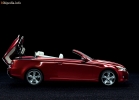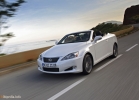Lexus is test drive since 2009 sedan
On a strange field
A three -liter in -line six rustles under the hood. Pressing the accelerator pedal is accompanied by an instant speed set. The machine gun selector in mode D, gas to the floor - and a small station wagon, screening with the rear wheels, is rapidly accelerating. The box acts surprisingly clearly, without delaying the switching, while the engine almost rests against the revolutionary limiter. A hard suspension almost silently works out small potholes and without a hint of breakdown - large. It practically does not allow the car even in steep turns. Hare habits are definitely rear -wheel drive. Not too strict stabilization system allows you to provoke light drifts in corners, while keeping the situation under control ... Isn't it like BMW? In fact, this is Lexus - IS 300 Sportcross.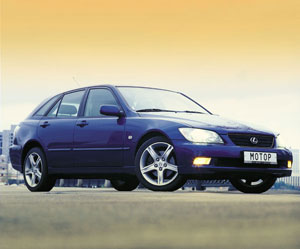 What is happening in the modern automobile industry is incomprehensible. Many companies try to infiltrate other people's market niches and quietly begin to lose their positions in their own. As they say, do not open the companies on someone else's pie. As for BMW, she was clearly carried away by the competition with her Stuttgart rival, as a result of which her models became more comfortable, comfortable and ... less sports. Seeing such a thing, Lexus decided to work in a traditional BMW sphere, which is considered to be a dock in the sector of comfortable business class machines.
What is happening in the modern automobile industry is incomprehensible. Many companies try to infiltrate other people's market niches and quietly begin to lose their positions in their own. As they say, do not open the companies on someone else's pie. As for BMW, she was clearly carried away by the competition with her Stuttgart rival, as a result of which her models became more comfortable, comfortable and ... less sports. Seeing such a thing, Lexus decided to work in a traditional BMW sphere, which is considered to be a dock in the sector of comfortable business class machines. Sportcross seriousness is already indicated by his appearance, in which aggression and power are unambiguously read. The low hood line, predatory eyes-faras, a rigid, emphasizing the wedge-shaped silhouette of a substete on the sidewall, serious wheels (225/45R17) and a strongly littered rear window, which is not typical for ordinary universals.
Thanks to beige skin, the salon looks great (the brand obliges). Of course, this is not very practical-but this only suggests that hardly anyone will ever use Sportcross for dirty matters.
The seats are tough in German, with developed lateral support and a successful distribution of loads, and even after the day spent at the wheel, fatigue is almost not felt. The steering wheel with a well -chosen cross -section lies perfectly in his hands and, no matter how adjusted, does not block the devices. It has buttons of manual control of the box, on the back of the spokes - to increase the transmission, with the front - to lower. The management itself is very logical, it does not require a long addiction.
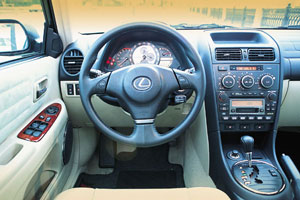 The instrument shield is designed in an original way, in the style of Swiss chronometers. The main speedometer is, on its dial, indicators of auxiliary information - the indicators of the engine temperature, fuel level and voltage of the onboard network. There is a tachometer.
The instrument shield is designed in an original way, in the style of Swiss chronometers. The main speedometer is, on its dial, indicators of auxiliary information - the indicators of the engine temperature, fuel level and voltage of the onboard network. There is a tachometer. The central console was occupied by an audio system and a microclimate control unit. The latter, by the way,, unlike most modern systems, does not have its own display and is controlled by three rotating handles (the usual scheme for systems without climate control). Once putting the parameters, I no longer returned to this. The automatic box selector moves along a winding slot, as on Mercedes, next to - buttons to turn on the sports and winter modes of transmission.
In the back seat the three of them will be crowded in the shoulders, moreover, a high central tunnel (the rear drive) passes in the middle). But the two will feel very freely, there is enough space above their heads and knees, it is desirable, however, that the growth of passengers does not exceed 185 cm.
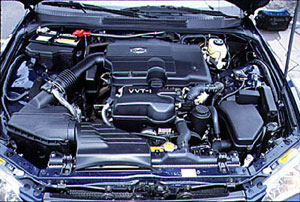 The trunk is by no means striking in its size, but the blanket and a strongly littered (almost like on a hatchback) rear window. And it is unlikely that there will be a desire to transport something there except the case or golf bag, just look at the light velor of the finish.
The trunk is by no means striking in its size, but the blanket and a strongly littered (almost like on a hatchback) rear window. And it is unlikely that there will be a desire to transport something there except the case or golf bag, just look at the light velor of the finish. Start key. A powerful in -line six shudders and freezes - only the tachometer arrow reports that the engine is working. Go. It was quickly found that the review through the rear window was practically absent, so there is not much sense from the intra -tower mirror. When parking in reverse, there is very lack of parking system. In the stream, side mirrors are helped out and the principle is going forward faster - you look less back. And IS 300 can ride quickly. It is a pity, however, that city traffic jams do not make it possible to release 214 horses.
On wet asphalt, the gas pedal is not even a sharp pressing of the gas, the TRC system (control of traction) intervenes with some late. If you had to accelerate in a bend, then there is a slight skid, and here VSC (a system of course stability) is already making itself felt. By the way, the TRC is disconnected by the button on the central console, but this does not mean that in its absence you can pass the turns by fan and write Pyataki - the VSC continues to act. It's a pity. A powerful, rigid, energy -intensive suspension and a good reactive force of the steering in conjunction with a painful six could arrange a real holiday for lovers of active driving. But you still get a lot of pleasure from Sportcross control - intelligible reactions to the steering wheel (with speed of speed, its sensitivity increases), minimal rolls in corners ... I just want to rush to narrow winding paths or mountain serpentine and attack a turn there, feeling Complete merging with the machine.
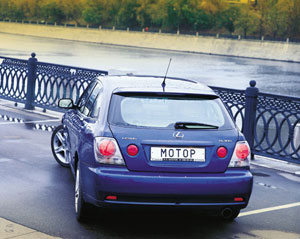 I do not really complain to the manual control mode of automatic boxes. But in this case, switch the programs manually, without taking off the hands from the steering wheel, I liked it, especially since the delay in the inclusion is minimal and you can even actively tend to the engine. By the way, there are no complaints about the brakes - they work optimally.
I do not really complain to the manual control mode of automatic boxes. But in this case, switch the programs manually, without taking off the hands from the steering wheel, I liked it, especially since the delay in the inclusion is minimal and you can even actively tend to the engine. By the way, there are no complaints about the brakes - they work optimally. In the evening, when I returned the car to the salon, the manager asked standardly: well, like a machine?. And I am quite sincere, not and, I must say, non-standard for myself, replied that it would love to become its master. If I have $ 48.500.
Text: Alexander Nadens
Source: Motor magazine [No. 11/2002]



